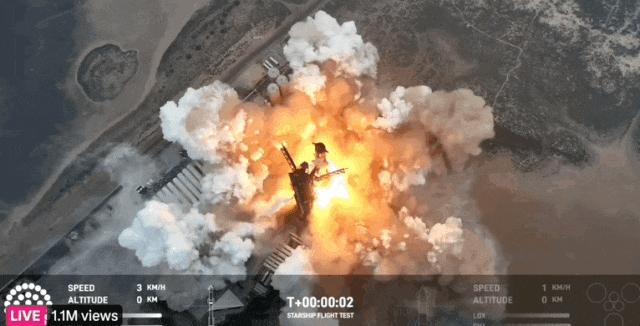"Informed AI News" is an AI-curated publications aggregation platform, ensuring you access only the most valuable information, with the aim of eliminating the information gap and transcending the confines of information cocoons. Find out more >>
SpaceX Starship's Successful Fourth Test Flight Advances Space Travel
- summary
- score

Summary:
SpaceX's Starship, the colossal rocket designed for reusability, achieved a pivotal milestone in its fourth test flight. Despite a minor hiccup with an engine, the mission soared successfully, demonstrating key capabilities: separation of stages, controlled re-entry, and oceanic landing. This marks a significant stride towards making space travel more economical and sustainable through full reusability.
Key Points:
- Launch and Separation: Starship lifted off with a minor engine issue but executed a flawless stage separation.
- Re-entry and Landing: The spacecraft navigated the scorching heat of re-entry and precisely landed in the ocean.
- Significance: This test validated crucial elements for future missions, including manned flights to Mars and beyond.
Insight:
The success of Starship's fourth flight is not just a technological triumph but a beacon for humanity's interstellar ambitions. It underscores the potential to transform space travel from a costly, single-use endeavor into a routine, affordable enterprise. As we stand on the brink of a new era in space exploration, the lessons from this flight will guide us in crafting a sustainable future among the stars.
Explanation of Terms:
- Reusability: The ability to use a rocket or spacecraft multiple times, reducing the cost and environmental impact of space missions.
- Re-entry: The process of a spacecraft returning into the Earth's atmosphere from space, which involves managing extreme heat and aerodynamic forces.
- Oceanic Landing: Landing a spacecraft in the ocean as a controlled, safe method of recovery, often used when the spacecraft is too large or specialized for traditional land-based recovery.
| Scores | Value | Explanation |
|---|---|---|
| Objectivity | 5 | Content provides a balanced overview of the test flight's success and its implications. |
| Social Impact | 4 | The test flight has sparked discussion on the future of space travel and its economic impact. |
| Credibility | 5 | Information is based on a successful test flight, backed by SpaceX's official reports. |
| Potential | 5 | The successful test flight significantly advances the potential for future manned missions to Mars. |
| Practicality | 5 | The test flight demonstrates practical steps towards reusable space travel. |
| Entertainment Value | 3 | While of high interest to space enthusiasts, it may not captivate a broader entertainment audience. |